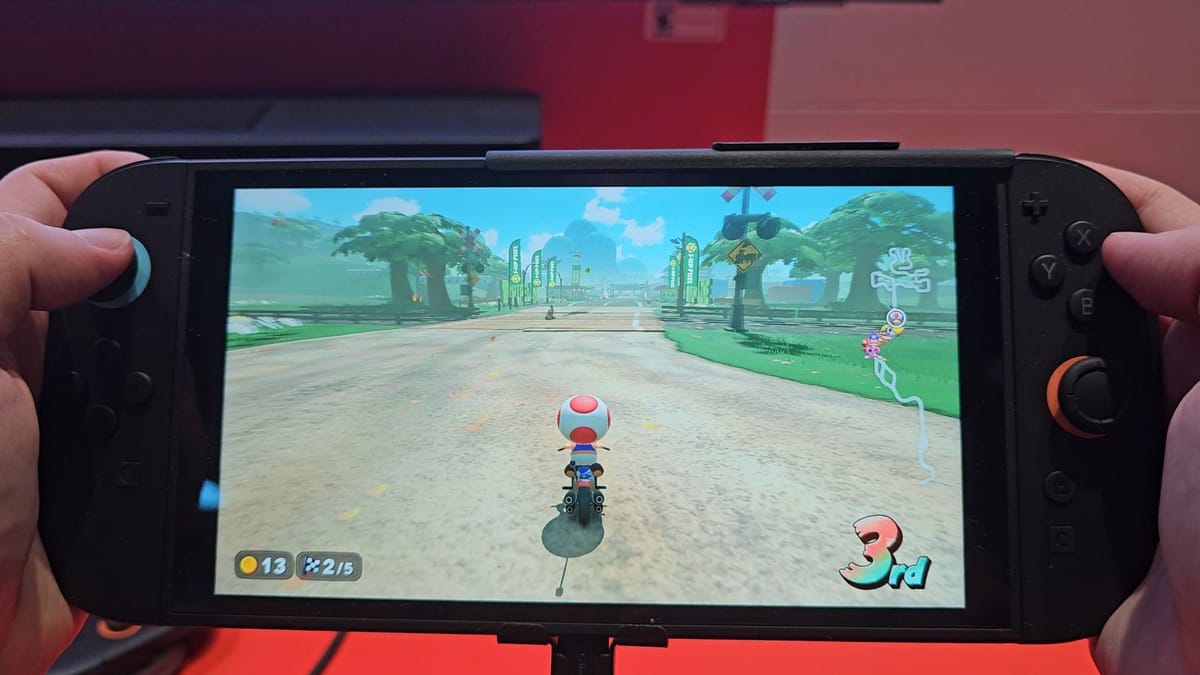
GamingTrend was lucky enough to be invited to a Nintendo press event in New York City, where we had the opportunity to get hands-on with the Switch 2, some of its games, and even some accessories. There’s a lot of good innovation to talk about when it comes to this new console, but also some drawbacks, so let's get into it.
Build
First, let's cover the physical build of the Switch 2. As someone who comes from mostly playing on not the original Switch but the Switch Lite, this bad boy felt WIDE in my hands. To compare, the Switch Lite is 8.2 inches wide, the Switch is 9.4 inches, and the Switch 2 is 10.7 inches. It wasn’t a big problem or anything, but it took some getting used to; that’s going to be an ongoing theme in this preview. The console is also 4.5 inches tall and a little over half an inch thick. For the touch screen, the Switch 2 boasts a sprawling 7.9-inch 1920x1080 pixel LCD display with a refresh rate of up to 120hz. In my time playing on the Switch 2, I can confirm that the visuals were, indeed, smooth. Some people might be disappointed because the screen is LCD instead of OLED, but the increased brightness of an LCD screen will lend itself well to the console's portability.
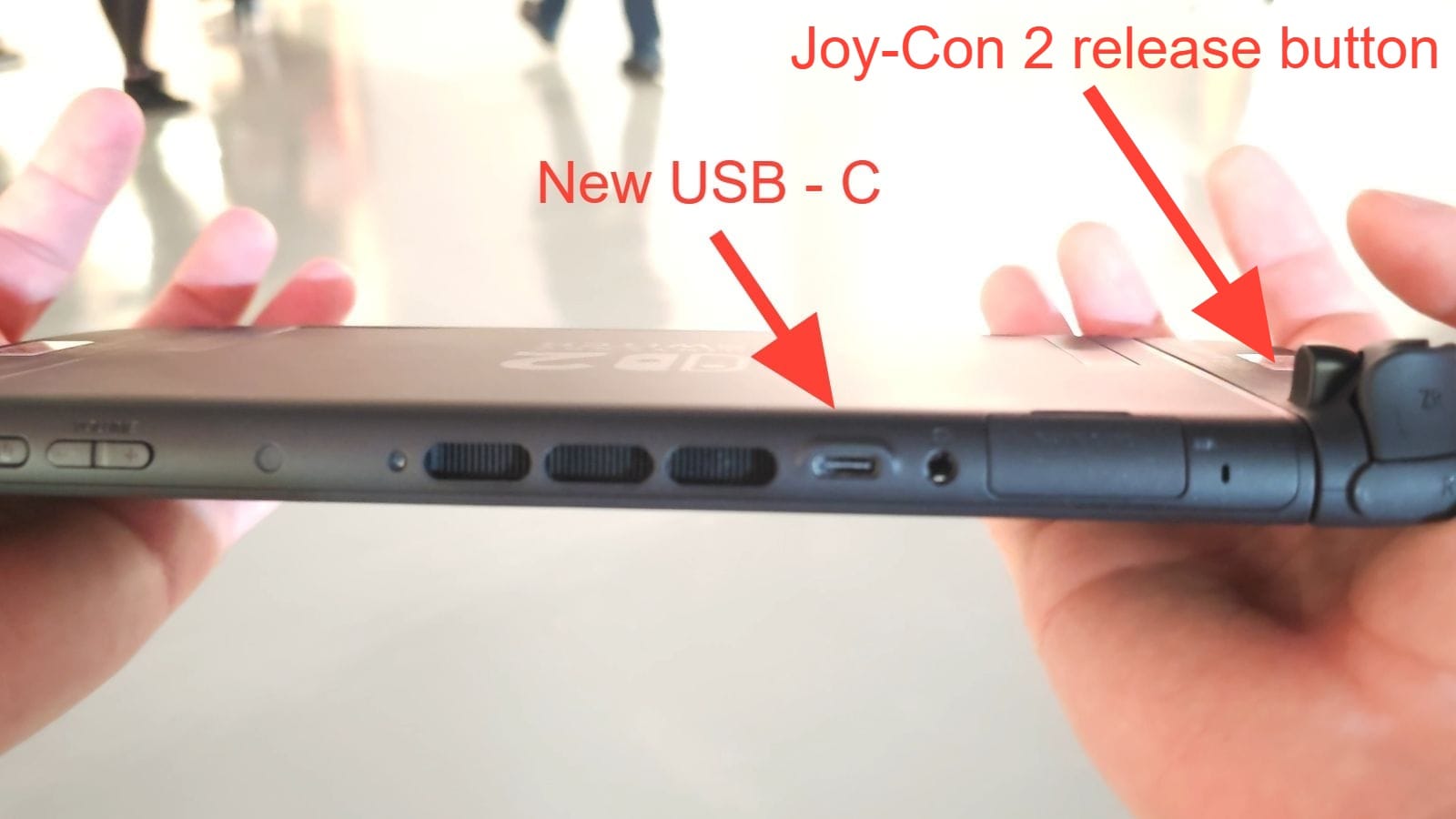
At the top of the device, there are the standard power and volume buttons, but there’s also a new USB-C port, making it possible to charge the device while it’s sitting on its kickstand. That port can also be used to plug in a camera, which I’ll get into a bit more later. Next to the USB-C port is a 3.5mm jack, speakers, and a built-in microphone with noise cancellation to ensure clean communication in the new GameChat. Fun fact: They excluded clapping from the noise cancellation so that the emotion of the moment isn’t lost.
The Nintendo Switch 2 also has a large stand that runs along the back of the device, offering much more stability than the dinky stand on the original Switch. The new stand also offers plenty of options for angling your Switch 2 however you’d like while retaining stability. To top it all off, the Switch 2 feels premium, which might be one of the most important features for a handheld console. Nothing wiggles, slides, or moves in a way it shouldn’t; it’s a tight system.
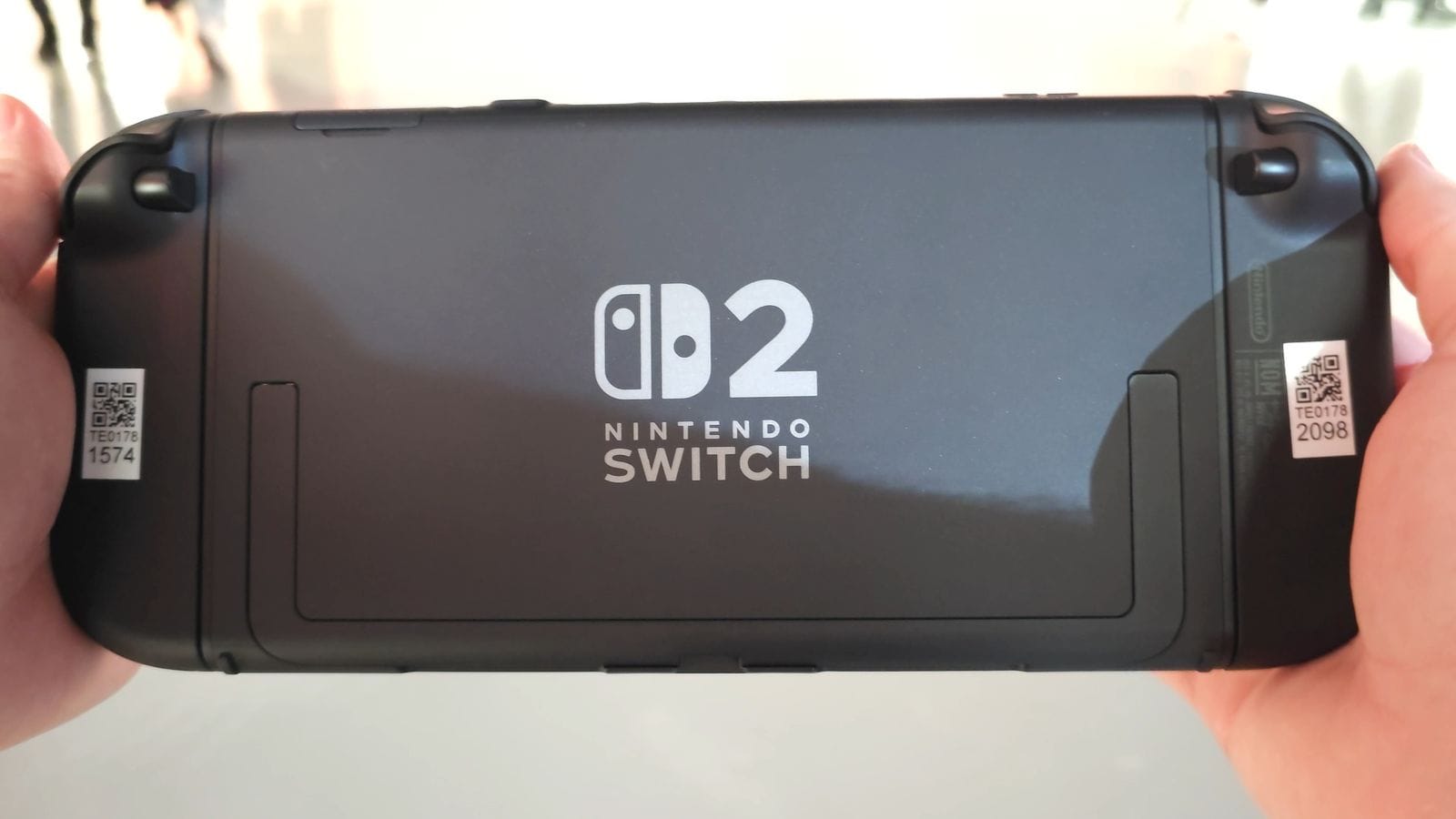
Joy-Con + Pro Controller
Moving on to the new Joy-Con 2, they now magnetically attach to the body of the Switch 2, with release buttons that are larger and more trigger-like. They felt a tad bit stiff, but I might have just been too gentle with them, and they were overall satisfying to use. The magnets are quite strong, too, and I didn’t notice any wobble or movement while the Joy-Cons were docked. It felt incredibly solid. All of that aside, it’s just really satisfying to snap the Joy-Con back in, and there’s no way I won’t catch myself absentmindedly fidgeting with the system.
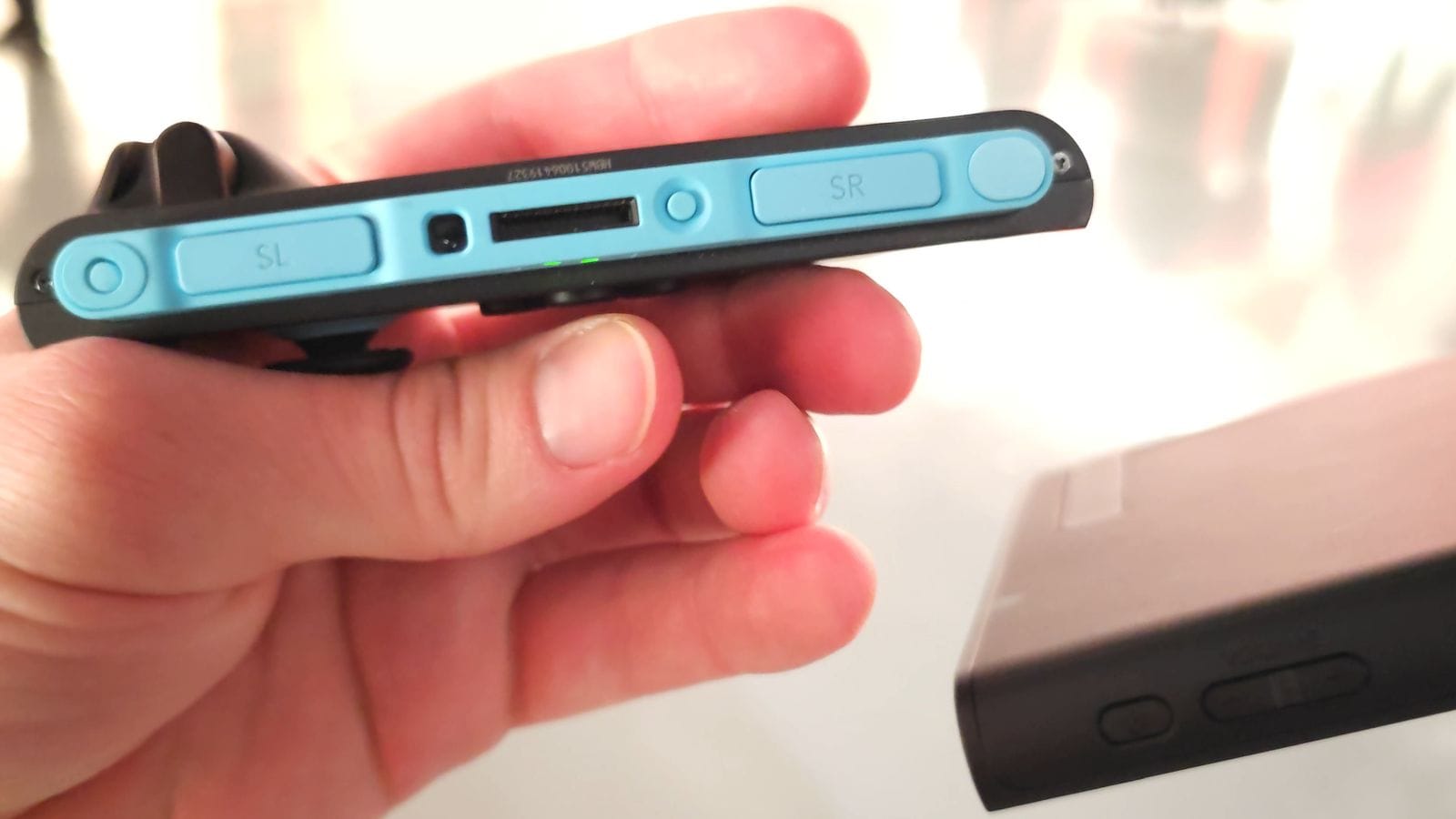
Although, what might just be the coolest innovation in the Joy-Con 2 is the mouse mode. Each of the Joy-Con can be used as a mouse, offering greater precision in gameplay. I have a feeling some people will really like this, and others will hate it, depending on their hand size. For me personally, finding a good grip had a noticeable learning curve. Once I started getting the hang of it, my movements in Metroid Prime 4: Beyond felt amazingly accurate. Now, throw in the accelerometers and gyroscopes, and you have plenty of dimensions of play. The ergonomics on the Joy-Con have also received an improvement, as the SL and SR buttons are much larger on the Switch 2, and the joysticks are a little bit larger as well.
Nintendo has also added a C button to the Joy-Con 2 for the new GameChat functionality, but you need to pay for a Nintendo Switch Online membership once the free period ends on March 31st, 2026. There’s also a new Nintendo Switch 2 Camera that’s sold separately and plugs into the top USB-C, or if you have a different USB-C camera you can use that. Be sure to check any third-party camera’s compatibility using the tool in the system settings. Combine the camera and built-in mic with the new screen sharing, and players have more ways than ever to connect with their friends from afar. On the note of playing with friends, the Switch 2 will also have GameShare, allowing you to share games locally with your friends regardless of whether they have the Switch or Switch 2, letting everyone play together.
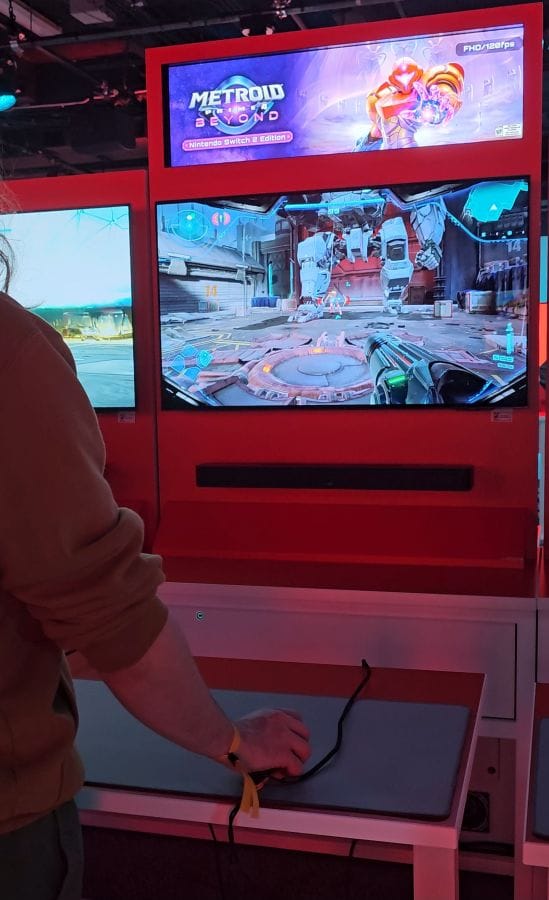
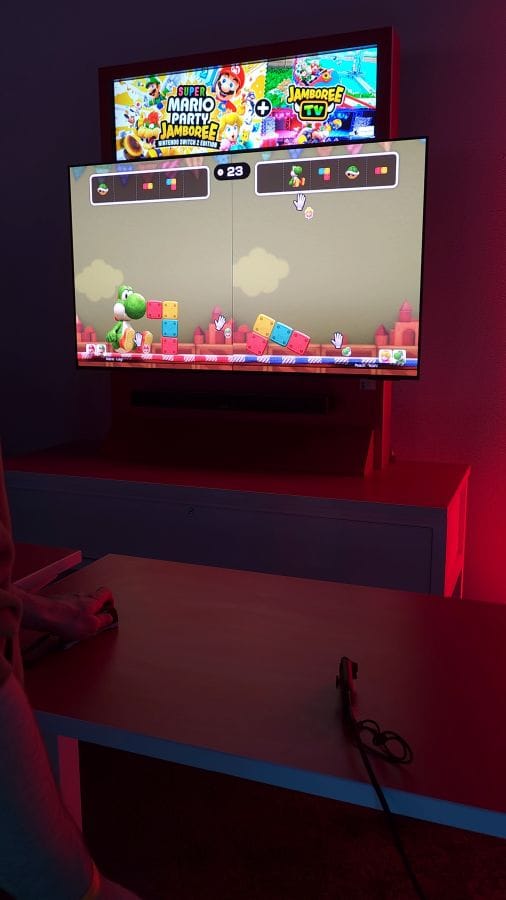

I also got to handle the new Nintendo Switch 2 Pro Controller. Like the Joy-Con 2, it has a C button that’s located at the bottom to quickly access GameChat. It also has an audio jack located on the bottom. However, the real stars of the show here are the two new mappable GL and GR buttons on the back of the controller. I can’t wait to see how players take advantage of these to make combos more complex or easier to execute. Then, there’s the overall feel of the Pro Controller. Plain and simple, it’s just comfortable. The sticks feel smooth, the handles fit well in the hand (mine at least), and the buttons are large but not overly so and satisfying to press. Overall, if you take gaming very seriously, then the Nintendo Switch 2 Pro Controller is a buy you should consider.
The specs we know
Let's move on to the specs that we know of at the moment. The Nintendo Switch 2 boasts 8 times more built-in storage than the first Switch, at 256GB compared to the first one’s 32GB. The storage upgrades also extend to the reading and writing speeds as well, which will be faster. Players will also have the option of plugging in a microSD for up to 2TB of additional storage, but only microSD Express cards are compatible.
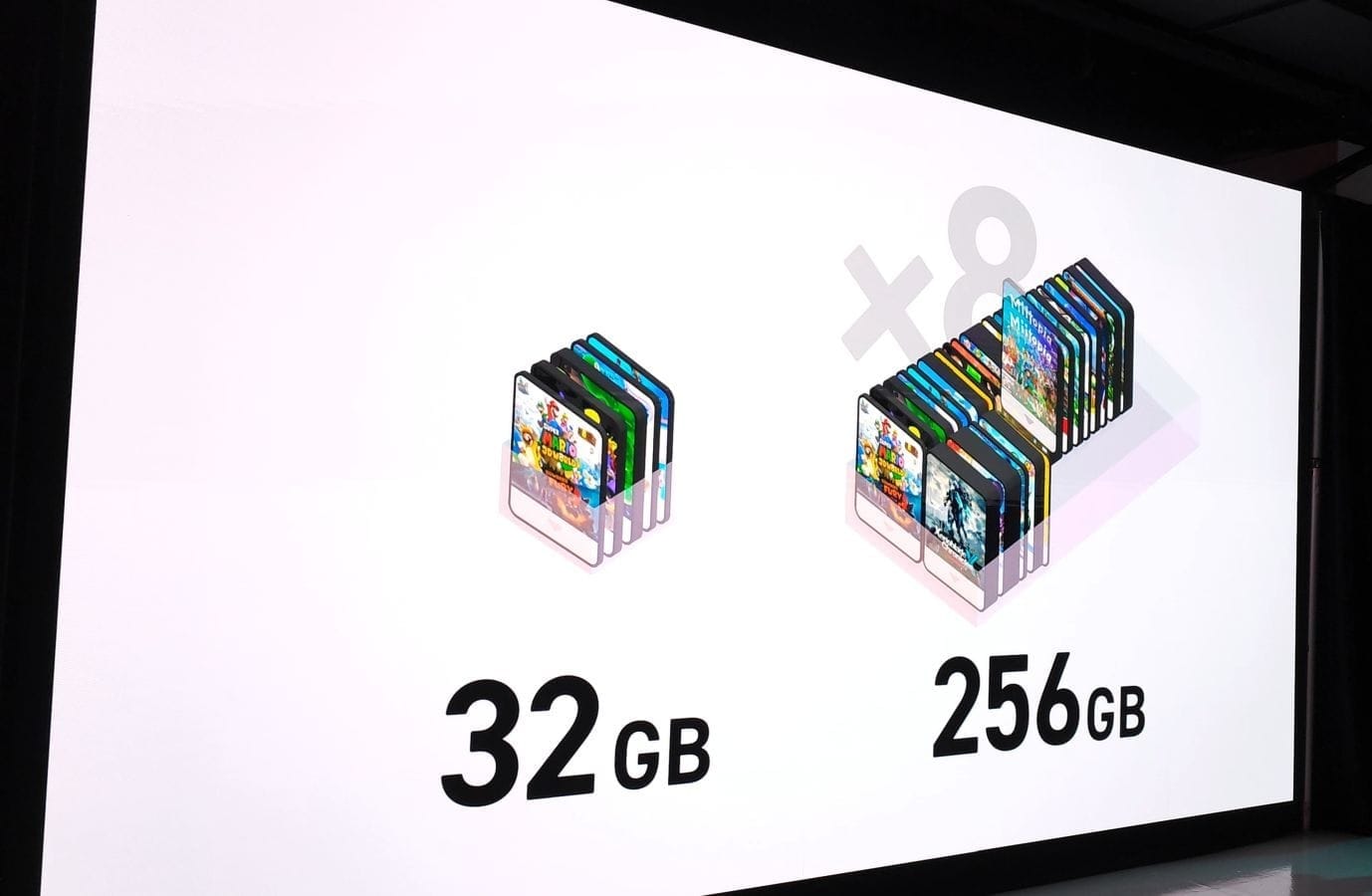
As for battery life, we didn’t get exact numbers on it, and representatives said it would be dependent on the game. Nintendo’s site for the Switch 2 gives it a battery life of about 2 to 6.5 hours, which is a pretty wide range. They list the first Switch at 4.5 to 9 estimated hours of battery life, so the Switch 2 is definitely downgraded in this area. It’s a bit of a catch-22, as better specs require more power but less battery life runs contradictory to the console’s portable nature. Fans will have to decide for themselves how much they value portability vs specs and features. Fans who prefer better battery life for portability will have to adapt to this change.
On another note, we don’t have many details on the GPU, CPU, or RAM yet, but thanks to a NVDIA Blog article, we know that it will have DLSS and 4K gaming capabilities. Whatever it ends up being, users can take comfort in knowing that the Nintendo Switch 2 has an internal fan to help keep it cool.
Welcome Tour
While it’s not exactly hardware, I have to mention Nintendo Switch 2 Welcome Tour. Players wander around on a massive Nintendo Switch 2 to learn about the new handheld console’s features and functionality. I played a little bit of it and can give it a thumbs up in terms of its intended purpose. One of the tutorials in particular had me shaking maracas by using the Joy-Con, and boy oh boy did the engineers go all out with the haptics. You can alternate the filling of the instrument, choosing between a rubber ball and beans, and they feel shockingly realistic while you shake the Joy-Con.
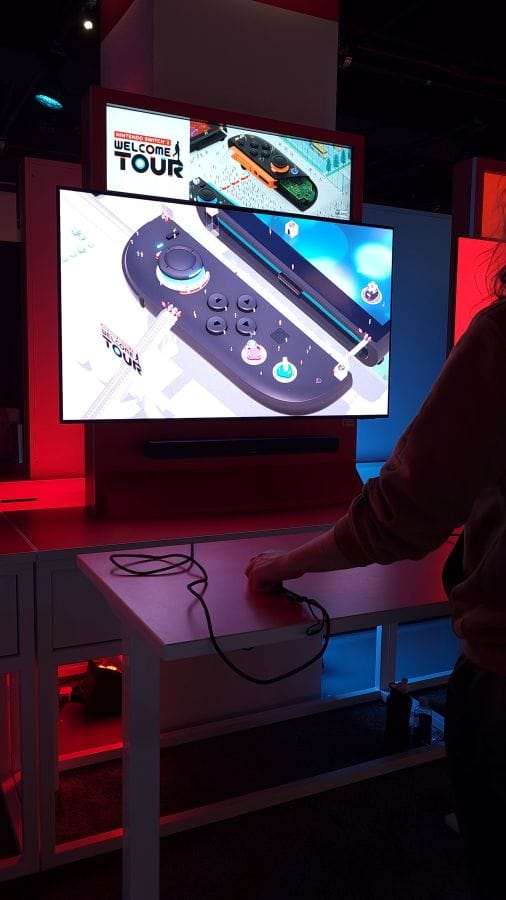

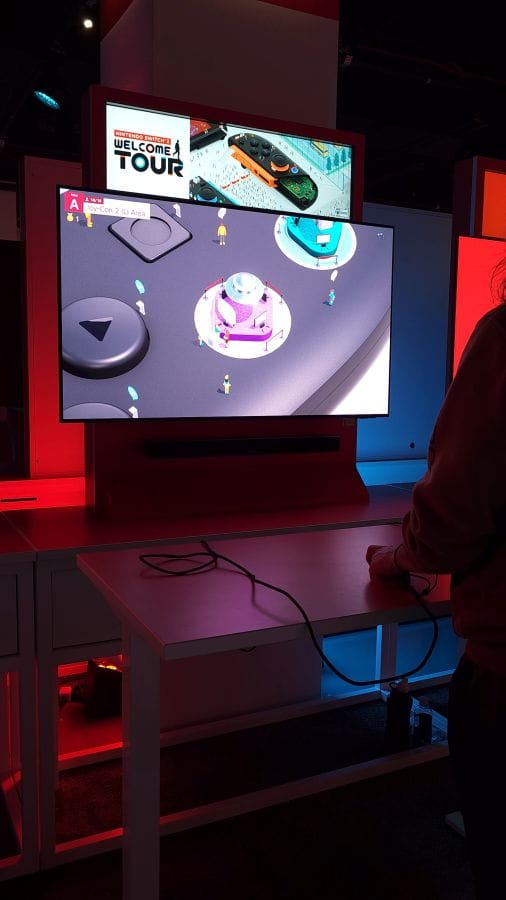
We don’t know the exact pricing outside of Japan, but we can infer from the 990 yen price tag that Welcome Tour will cost just shy of 7 dollars in the United States as of writing this. That’s not a bad price, but it’s certainly not a great one for what amounts to a tutorial. I played a little bit of Welcome Tour while attending the event, and while the haptics were particularly impressive, charging for it still feels odd. This goes double when PlayStation released their primer, Astro’s Playroom, for a whopping zero dollars. At the same time, the notion that Welcome Tour goes into extreme depth was pressed repeatedly, so maybe said depth validates its price tag. Speaking of price tags, the Nintendo website lists Mario Kart World at the price of $80 and Donkey Kong Bananza at $70, so it looks like there will be a bit of price variation with games.
To wrap up, the Nintendo Switch 2 has a lot to offer. Between its social GameShare and GameChat features, its massive storage boost, and the innovative hardware evolutions like the mouse mode on the Joy-Con 2, players have a lot to look forward to. While the $80 Mario Kart World price is a tough pill to swallow, Donkey Kong Banaza’s price tag shows that it probably won’t be the standard. The Nintendo Switch 2 will be released on June 5th, 2025, and was set to cost $449, but Nintendo is currently reevaluating the price due to recent tariffs in the United States.
